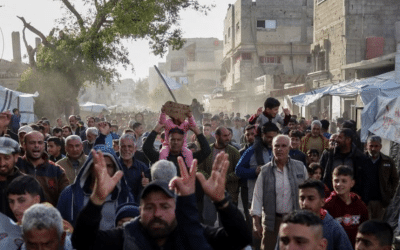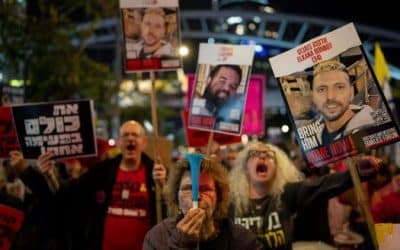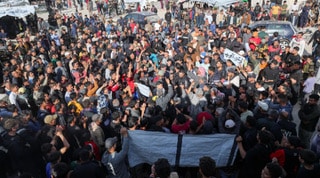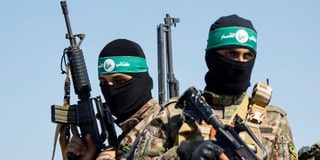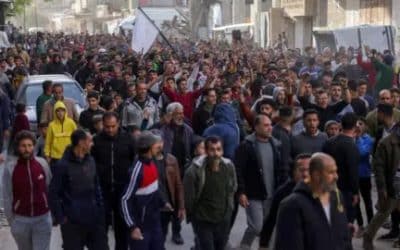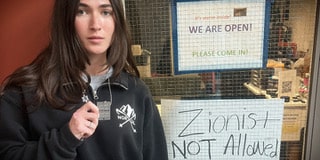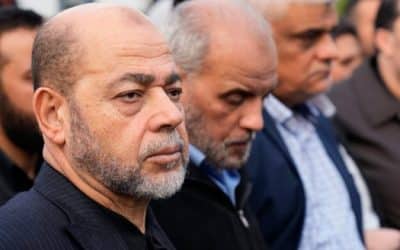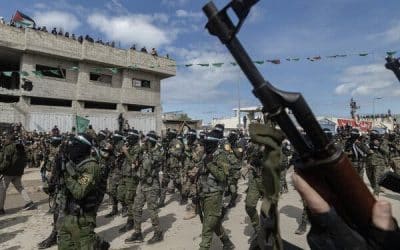People4Peace is on a mission to become a leading voice in educating and enlightening audiences worldwide about Israel’s challenges and rights through research-backed content.
We envision a future where Jewish individuals feel safe across all college campuses and major cities, free from the need to justify their support for the State of Israel. By presenting the facts and history of the Jewish people and the State of Israel, we aim to foster a global culture of informed dialogue that prioritizes peace and shared humanity.
Following the October 7, 2023 Hamas terrorist attack on Israel, a diverse group of professionals united to form People4Peace to counter Antisemitism and anti-Israel propaganda; and advocate for Israel’s right to exist, defend itself and pursue peace. People4peace emphasizes the importance of understanding the historical and current realities of the region while promoting the hope for a just and sustainable peace, including the possibility of a two-state solution.
Through education, dialogue, and the amplification of diverse perspectives, People4Peace strives to build bridges of understanding and support efforts to achieve lasting harmony both at home in the United States and in Israel. People4Peace focuses on targeted outreach to communities and demographics to share balanced and research backed perspectives as the need for such information dictates.
People4Peace incorporated as a not-for-profit organization and enjoys tax exempt status as a charity under Section 501(c)(3) of the United States Internal Revenue Code.
Palestinians take part in largest anti-Hamas protests in Gaza since start of war
Palestinians demonstrated against Hamas in northern Gaza on Tuesday, in what appeared to be the largest protest against the militant group since its attacks on Israel on October 7, 2023. Video obtained by CNN showed large crowds…
On Israel’s birthday bring them home
Anyone who wants this war to end must do everything possible to bring the hostages home. Hamas could release them immediately, without any deal. If it cared at all about its own people, it would. If it valued Palestinian lives even a fraction as much as Israelis value ours, it would act….
‘Yes To Love, No To Terrorism’: Anti-Hamas Protests Reignite In Gaza Despite Hamas Threats And Violence
Crowds of Palestinians marched in Beit Lahia, which is in northern Gaza, on Wednesday chanting “Hamas out, out!” and “We don’t want a Qatari tent—we want to live in freedom.” Other chants included, “Yes to love, no to terrorism, yes to peace” and “Deliver the message… all of Hamas is garbage.”
Amazon’s Prime Video Streams Oct. 7 Documentary Featuring Real-Time Footage From Nova Music Festival Attack
“…#NOVA remains an important, unique and must-see film…Not only does it document the brutal start of the war, but it also captures different viewpoints without a conventional news agenda or, indeed, any narrative filters. Instead, the self-shot, real-time footage…
‘Patently Falsified’: Hamas Deletes Thousands From Gaza Death List, Including Over 1,000 Children
Hamas has quietly removed thousands of names from its official casualty reports in Gaza, prompting fresh scrutiny of the accuracy of the death toll figures that have been widely cited by media and international organizations since the start of the Palestinian terrorist group’s war with Israel.
Hundreds join Gaza’s largest anti-Hamas protest since war began
“We refuse to die for anyone, for any party’s agenda or the interests of foreign states,” he said. “Hamas must step down and listen to the voice of the grieving, the voice that rises from beneath the rubble – it is the most truthful voice.” Footage from the town also showed protesters shouting…
‘October 8’ Documentary on Eruption of Antisemitism, Hatred of Israel After Hamas Attack to Premiere in US
The documentary shows that on Oct. 8, 2023 — just one day after the largest massacre of Jews to take place since the Holocaust — people across the US were already trying to justify and celebrate the Hamas atrocities and use them as an excuse to spread hatred against Jews and Israel.
War on Israel has failed, try peace
For decades, Arab and Palestinian leaders have made the same mistake: attack Israel with dire consequences, regret it, only to repeat that mistake and attack Israel again a few years later. Egypt and Jordan have been notable exceptions. When it comes to the Palestinians…
Hamas Official Expresses Reservations About Oct. 7 Attack on Israel
Mousa Abu Marzouk, the Qatar-based head of Hamas’s foreign relations office, said in an interview with The New York Times that he would not have supported the attack if he had known of the havoc it would wreak on Gaza. Knowing of the consequences…

